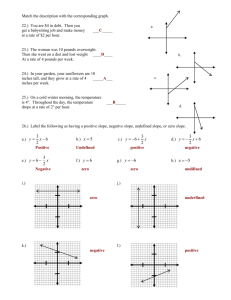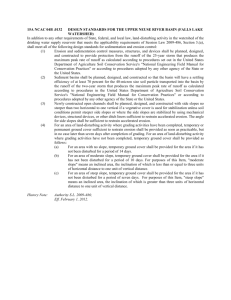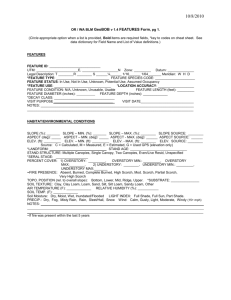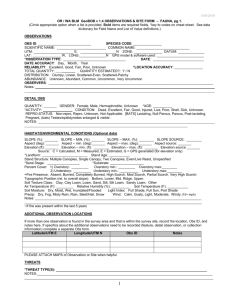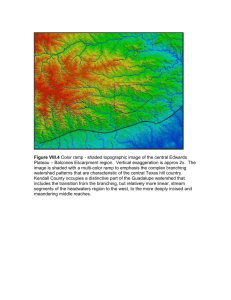here
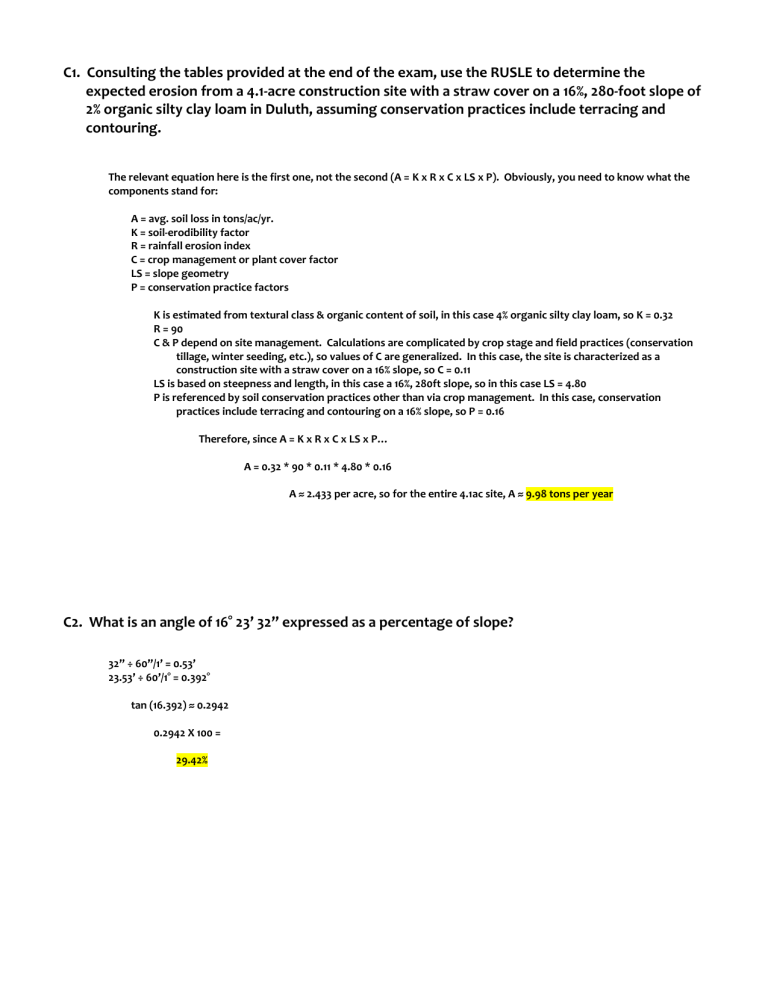
C1. Consulting the tables provided at the end of the exam, use the RUSLE to determine the expected erosion from a 4.1-acre construction site with a straw cover on a 16%, 280-foot slope of
2% organic silty clay loam in Duluth, assuming conservation practices include terracing and contouring.
The relevant equation here is the first one, not the second (A = K x R x C x LS x P). Obviously, you need to know what the components stand for:
A = avg. soil loss in tons/ac/yr.
K = soil-erodibility factor
R = rainfall erosion index
C = crop management or plant cover factor
LS = slope geometry
P = conservation practice factors
K is estimated from textural class & organic content of soil, in this case 4% organic silty clay loam, so K = 0.32
R = 90
C & P depend on site management. Calculations are complicated by crop stage and field practices (conservation tillage, winter seeding, etc.), so values of C are generalized. In this case, the site is characterized as a construction site with a straw cover on a 16% slope, so C = 0.11
LS is based on steepness and length, in this case a 16%, 280ft slope, so in this case LS = 4.80
P is referenced by soil conservation practices other than via crop management. In this case, conservation practices include terracing and contouring on a 16% slope, so P = 0.16
Therefore, since A = K x R x C x LS x P…
A = 0.32 * 90 * 0.11 * 4.80 * 0.16
A ≈ 2.433 per acre, so for the entire 4.1ac site, A ≈ 9.98 tons per year
C2. What is an angle of 16° 23’ 32” expressed as a percentage of slope?
32” ÷ 60”/1’ = 0.53’
23.53’ ÷ 60’/1° = 0.392° tan (16.392) ≈ 0.2942
0.2942 X 100 =
29.42%
C3. Considering the equation reproduced above, at what distance (in meters) from the higher of the spot elevations specified on the map shown below would you expect to find the intersecting whole-number contour, assuming that any side of the grid square is 35 meters in length?
To start, you have to recognize that the two given elevations lie along a diagonal of the grid square. Assuming that any side of the grid square is 60 meters in length, the Pythagorean Theorem (c² = a² + b²) can be used to determine the length of the diagonal: c² = 35² + 35² = 2450, so c ≈ 49.50m.
Next, you need to recall what each part of the formula stands for; namely:
B = highest spot, in this case 54.69m
A = lowest spot, in this case 53.22m
X = contour sought, in this case 54.00m
L = A-to-B distance, in this case 49.50m
Y = B-to-X distance
Solve for Y:
Y
54
54
.
.
69
69
54
53
.
.
00
22
* 49 .
50
Y = (0.69/1.47) * 49.50 = 23.23m
C4. An average of 15 inches of rain per day falls on a 1,829,520ft² site where 30% of the water is absorbed by subsurface conditions. What is the runoff rate on this site considering the equation shown above and that 1 acre = 43,560ft²?
Q = peak rate of runoff in cubic feet per second (cfs),
C = runoff coefficient,
I = intensity of rainfall (in/hr for duration = Tc), &
A = drainage area (acres).
Since 30% of water is absorbed, 70% runs off; therefore, C = 0.70
Since 15 inches of rain falls on the site per day and there are 24 hours in a day, I = 0.625 (15÷24).
1,829,520ft² ÷ 43,560ft² = 42ac, so A = 42
Q = 0.70 * (0.625) * (42)
Q ≈ 18.375 cfs
C5. Over 42 feet of distance, the ground rises 6 feet, 3 inches. What is the slope of this terrain expressed as an angle of (i.e., in °, ’, and ”)?
Run = 42, Rise = 6.25, slope = Ri/Ru X 100 = 6.25/42 X 100 = 14.88%, so tan -1 (0.1488) = 8.46°
08° 27’ 36”


